Anthony Metivier's Blog, page 19
October 7, 2020
Scott Gosnell On Giordano Bruno And The Composition Of Images
 Giordano Bruno wrote many fine books about the art of memory. Sadly, most of them were unavailable in English for the longest time.
Giordano Bruno wrote many fine books about the art of memory. Sadly, most of them were unavailable in English for the longest time.
Things are different now.
My guest today, Scott Gosnell, is the man to thank.
He’s spent the better part of a decade translating Bruno’s books for modern English readers. The latest release in a very fine series is Song of Circe and On the Composition of Images.
Scott is also the CEO of Windcastle Venture Consulting, a public speaker, part-time college lecturer and the author of Startup Geometry.
In our conversation today, we talk about Bruno’s enduring importance for students of mnemonics. We draw out the core ideas of balance and how you can craft a relationship between imagination and memory and get the most out of Bruno’s theory of confabulation.
We also discuss Bruno’s techniques for the Memory Palace and just how advanced his approach was for his time. Thanks to Scott’s work, these “next level” approaches are even more relatable for the here and now.

So if memory techniques have you intrigued, but you want more, this episode is for you.
Or if you’re having trouble fitting into the mold of how you “should” be committing complex information to memory, you’re about to find encouragement.
Or if you’re seeking a fresh start along your career path and you’re overwhelmed by a lot of material to learn…
Why not give the advice of a “heretic” a try?
Want to know more? Just press play above and to learn more about:
The dual-role of student and teacher in academia…and the need for both
The reason learning language out of necessity, not desire, can be of greatest motivation
How variants of singular truth and dual, or even multiple, modalities can exist in harmony, and what this means for committing that “truth” to memory
Bruno’s philosophy of a three-level universe (and how it’s even more relevant today)
Why organization is subjective, and how you can make it work for you, even if to someone else it looks like a “jumble sale”
The differences between copying and composition, and the reason the latter can be both more beneficial and easier
Why memorization is not always a perfect recollection, but instead a simplified reimagination (and why it’s perfectly natural!)
Why memory benefits both judgement and decision making
How we simply break down Bruno’s ideas of subject, abject, and intention, to easily incorporate them into memory work
The proven method for describing philosophical ideas – where, if we’re honest, we all can get stuck trying to memorize them
Why Hermeticism is so attractive, especially to students of memory
The Clavis Magna, perhaps Bruno’s greatest mystery
Further Resources on the web, this podcast, and the MMM Blog:
Bottlerocket Science – Scott’s blog and his own podcast
The Last Samurai by Helen DeWitt – referenced in this podcast
Scott Gosnell Talks About Giordano Bruno – our previous interview
John Michael Green on Giordano Bruno, Memory, and Time
More Memory Palace Books You Should Read
September 30, 2020
Nelson Dellis On Developing Your Memory Superpowers
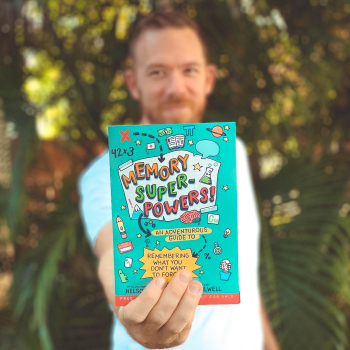 My biggest mistake as a kid was asking for cliche abilities like x-ray vision instead of the memory superpowers I really needed.
My biggest mistake as a kid was asking for cliche abilities like x-ray vision instead of the memory superpowers I really needed.
And if you made mistakes like that too, it probably isn’t your fault. After all, we’re taught to daydream about easy solutions far more than to enjoy deep training.
The question is…
Why is it that our global societies don’t prioritize learning to use our memories better at a younger age?
To help answer that, and help all of us correct course for the future, I sat down today with Nelson Dellis.
Nelson is a four-time US Memory Champion and Grandmaster of Memory. He is an author, world memory record holder, co-founder of the Memory League competition, and founder of the Alzheimer’s awareness charity Climb For Memory.
Today we discuss Nelson’s latest book, Memory Superpowers!: An Adventurous Guide to Remembering What You Don’t Want to Forget.
This excellent follow-up to Remember It! is geared towards helping younger students enhance their memorization skills.
https://www.youtube.com/watch?v=DF_vO...
In our conversation, we delve into the benefits memory training creates. These include:
Thinking freely through the lens of memory
Discarding the self-imposed filters we utilize in our daily lives to truly revolutionize our work
The joy of letting our imagination run wild and boundless
It’s been said that parents learn as much from their children as the child does from their parent along the journey of growing up and growing older…perhaps even those who aren’t parents can embrace those same lessons, viewing the world through the eyes of a child once again.
So if you’re searching for an out of the box way to grow your memory practice…
If you’re tired of the rules and the “shoulds” of how things should be done…
If you’re a student and think memory work is something only grownups with “bad memories” do…
Get this book, go through the interview and become the teacher of your children you need to be so you can learn from them a.s.a.p.
Ready to dive in? All you have to do is press play above and listen in as we explore:
The concept of “active” reading, and the more fitting title for anyone who turns the pages of a book
The importance of engagement and immersion in learning
How dialogue is an effective training method
Why creativity is crucial in memory work (and how anyone can be creative…yes, you!)
Perspective for memory training – because “easy and fun” is not always realistic
The usefulness of simplicity (back to basics using the alphabet) …and in contrast the case for the “complicated” modern video games as memory palace inspiration
The benefit of familiarity in constructing paths in The Journey Method
Possibilities for linking ancient memory practices with modern technology…benefits for the screen-oriented
An argument that mastery isn’t necessary for memorization, but instead, just the opposite! Yes, really!
The demonization of memorization in the educational system, and why we should be praising its virtues instead.
And so, so much more.
Further Resources on the web, this podcast, and the MMM Blog:
Nelson Dellis’s official website
Find Nelson’s books on Amazon (including Memory Superpowers!)
Extreme Memory Improvement With Memory Champion Nelson Dellis
How to Win the USA Memory Championship
September 22, 2020
Thomas Krafft On How To Craft And Deliver World Class Presentations

Do you want to give a presentation that everyone in the room remembers?
I know I sure do.
That’s why I did one thing first after getting the invitation to give a TEDx Talk:
I picked up the phone and called Thomas Krafft.
I’d seen Thomas give a presentation about a year earlier and knew he was good himself.
I also knew about his company and the help it offers people around the world through the Presentation Boss Podcast.
I learned a ton as a result of working with Thomas. Plus, it looks like my talk really hit it out the park, setting the stage for even better talks to come.
Now… if you’re a regular here, you might be thinking…
Hang on, Anthony! You’ve been speaking for years! What do you need a speaking coach for?
Good question. Here’s the low-down:
Although I’d been writing and delivering lectures at universities around the world for nearly ten years, not to mention oodles of videos and live streams, I was humble enough to realize that this particular stage was new to me.
It’s also a huge opportunity and I didn’t want to “wing it” as I’ve done so many times before. Thanks to the help I got from Thomas, it’s been a tremendous success, though ultimately you have to be the judge of just how successful…
https://www.youtube.com/watch?v=kvtYj...
It’s NEVER To Soon To Learn How To Present Better
Frankly, I could have used help to become a better speaker during my earlier career too.
Speaking actually isn’t that difficult for me, and neither is writing talks or presenting based on notes.
What is difficult for everyone is being your own critic and seeing things from an outside perspective. For me, that is excruciatingly difficult… and all the more so as my meditation projects reduce the amount of thoughts in my head.
In other words, without the external feedback of an expert… just because you might be able to crank out lots of writing, memorize it and speak easily in front of a crowd doesn’t mean it’s going to be good.
In fact, without expert help, you can pretty much guarantee it’s going to be far from world class. And that’s what you want, right? To be understood, and above all, remembered.
A Good Presentation Changes Lives
You also probably want to know that you’ve touched lives too. You probably want to receive feedback like this:
Dr. Metivier,
I wanted to thank you for helping me release an immense amount of tension and negative thoughts in a manner of seconds. I was sitting on my couch two days ago with a heating pad on a massive knot in my neck. I don’t generally have physical manifestations of stress, and this was new. This knot came from stress related to the death of Ruth Bader Ginsberg and what that will mean for the US and the upcoming election.
My Youtube recommendations are mostly cooking or travel related and the very rare Ted talk mostly related to topics i can use in my classroom. Self-help is not a topic that I think of much or watch videos related to, ever.
Something made me stop at your TedX talk that appeared in my feed with an incomplete title “Two Easily Remembered Questions That Help Silence Negative…”
So I watched it, then watched it again. Then I tried it.
My stress and negativity released almost immediately. And then the tears started. a middle aged man, with a heating pad on his neck, bawling on the couch. It was glorious. It was so easy.
Thank you for that. Thank you so much for giving me this small tool, these questions and this mindset.
Stay Well and Stay Safe.
Chris Drake
San Diego, CA
USA
Do You Want Your Next Speech To Create An Impact Like That?
The important points in Chris’s email, and in many of the comments on the presentation video are these:
The content was good enough to go through twice
The content was good enough to create a response
My listener took action and got results.
There are rules that govern how and why good presentations create such results.
If you want to discover these simple rules, let me introduce you to my new “secret weapon” for giving world class presentations that reach and help positively transform the lives of hundreds of thousands of people:

About Thomas Krafft
Thomas Krafft is the co-founder of Presentation Boss, Australia’s premiere communications consulting firm, he has helped thousands of entrepreneurs and businesses refine their communication, specifically presentations, and, more specifically, the visual tools used in those communications, to share a message effectively, making it unforgettable.
Our conversation moves swiftly, as we cover such a wide range of areas of the art of public speaking, but, at the same time, it’s casual enough as a listen-anywhere, anytime topic. Thomas is a wealth of information, and in our time spent together the insight he delivered was both a challenge, and encouragement – the best of both worlds.
Having delivered hundreds of talks to thousands, with audiences big and small, he has mastered the art of balance, both in preparation (believe it or not you can be overprepared), and presentation (knowing how to truly cater to your listeners for maximum impact).
Whether you have an upcoming presentation that you’re struggling to prepare for, racing to make a deadline for that first draft of notes.
Or you want to freshen up your presentation style because your last talk didn’t go as planned.
Maybe you just want to be a more effective communicator in your everyday life with your peers.
Whatever the motivation, Thomas can help.
So press play above and listen in as we discuss:
The secret to taking what’s inside your head, and with clarity and confidence, deliver that to an audience (very high level, I know, but it’s true!)
How speeches are really judged and evaluated – and it may not be as subjective as you think
The questions you must ask about your audience before even putting a pen to paper
The real purpose of any presentation you deliver, bridging a gap, and how exactly to construct that bridge
Where people “fall down the most,” in speaking
How to handle “blind dates” for your audience – without context – and how to avoid them.
Why you need to incorporate Aristotle’s Pillars of Rhetoric into every presentation you give, and why the right mix of the three elements is crucial
Rethinking the idea of audience participation and engagement – it can take many different forms
The reason using tools, or not using them for arbitrary reasons, can be your biggest downfall
The pros and cons of verbatim vs. topic based speaking styles (you might be surprised here!)
The keys to making good communication skills translatable to any medium
How comforting a reality check can be – understanding the process that skills are learned (bring on the learning curve as it’s perfectly natural)
Why being terrified of public speaking is okay, but the real reason overcoming it is necessary…and possible. For anyone.
Enjoy this episode and make sure to give Thomas a call before you give your next presentation!
Further Resources:
How to Memorize a Monologue: Your Quick and Easy Guide
How to Memorize a Speech Fast (Without Sounding Like a Robot)
The ancient art of giving persuasive speeches from memory is also covered in the Rhetorica Ad Herennium:
September 16, 2020
Mnemonic Devices: Everything You Need to Know (And How to Use Them)
 Instantly memorizing what you need to know is the ultimate dream for many people.
Instantly memorizing what you need to know is the ultimate dream for many people.
But for many, their inability to remember anything is the ultimate nightmare.
One reason people struggle is that there are so many terms. It can be confusing.
But the facts are that anyone can use mnemonic strategies to learn faster and remember more. You just have to find the approach that works best for you.
Here’s what this post will cover:
What Is A Mnemonic Device?
Mnemonic Device Examples
– Personally Created Flashcards
– Acronyms
– The Memory Palace Technique
– Associative Imagery, Linking, and Pegwords
– Story Method
– Major System and Dominic System
– 00-99 PAO
– Mind Maps
Mnemonic Techniques and Strategies for Remembering Things
So if you’re ready to dive in, let’s get started with…
What Is A Mnemonic Device?
The best mnemonic device definition we can start with is this:
Anything that helps you remember better is a mnemonic.
Even the dictionary says that a mnemonic device is anything: “assisting or intended to assist the memory.”

For that reason, it’s a highly adaptable term that works as an umbrella to cover a wide range of activities including:
Personally created flashcards
Acronyms
Memory Palaces (sometimes called a Mind Palace, the Method of Loci, Journey Method, or Roman Room)
Associative imagery, linking, and pegwords
Story method
Major System or Dominic System
00-99 PAO
Mind Maps
… and more
Given this adaptability, it’s little wonder there’s so much confusion over the term.
But here’s what I’d like you to notice:
None of these are really “devices.” They are processes.
As memory expert David Berglass made clear in A Question of Memory, memory is not a unitary mechanism or a “thing.” It is a behavior.
And that is how you use mnemonics. You understand them as processes and then you sprinkle them into your life so they become part of your behavior.
Let me make that more concrete:
When I gave a TEDx presentation, I not only memorized my talk — on that day, I memorized all the names of the people I met. I used a wide variety of techniques (see how to memorize a speech) and chose the specific mnemonic devices I used based on the circumstances.
With practice, using mnemonics happens almost on autopilot!
Mnemonic Device Examples
Let’s dig a little deeper using our list of mnemonic examples above.
Personally Created Flashcards
My friend and language learning expert Gabriel Wyner inspired me to give these a try after reading his book, Fluent Forever.
Basically, instead of downloading software put together by a stranger, get some paper and colored pens. (Obviously, you also have all the information you want to memorize organized too.)
Next, use the paper and colors to help you create images. These images should remind you of the target information you want to recall.

Flashcards as mnemonic devices for Chinese characters
Now, there’s a whole lot more going on in this example, so please keep it in mind. I’ll go deeper into it later in this post.
For now, if you’re worried about having a bunch of cards flying all over the place, don’t be. You can wrap them up in a Memory Palace drawing just like this:

I used simple and elegant combinations of mnemonic devices to pass level III in Mandarin last year
Next, let’s look at how abbreviations can help.
Acronyms
Have you ever asked… what is it called when you use letters to remember words? As usual, there’s no one answer, but the first method is called an acronym.

For example, when I teach memory improvement in a live setting, I usually talk about how following the rules will set you F.R.E.E.
“Free” is a word that helps me remember the meta-rules students need to make learning with memory techniques easy and fun:
Frequent practice in a state of…
Relaxation and a spirit of…
Experimentation so that you can be…
Entertained
Just follow those rules as you use mnemonics and you will truly be free to memorize as much as you want.
The best part?
You can lay out acronyms inside of a Memory Palace.
The Memory Palace Technique
The Memory Palace is an ancient technique. It essentially involves using space as a mnemonic device.
You do this by thinking about a familiar location. Then, you chart out a logical journey that does not take energy from your memory. If you have to memorize the journey, it is not a good Memory Palace, so pick something else.
For example, I visited a bookstore in Zamalek, a part of Cairo, Egypt. To keep it simple, I used only the parts of the bookstore I remembered.
To help my brain reduce the cognitive load even further, I made a quick drawing of the space:

A Memory Palace drawn on an index card to maximize its value as a mnemonic device
Notice I’ve actually drawn the Memory Palace on an index card (or flashcard). I do this because it makes it easy to store many of them for quick reference if I ever need them.
I also write down the number of stations and name them. I find this helps me “set and forget” the Memory Palace and ensure I’ve gotten it right the first time.
I believe scientists call this kind of activity a means of harnessing the levels of processing effect.
Associative Imagery, Linking, and Pegwords
Inside of these Memory Palaces, place a list of mnemonics you create. These will be a kind of mnemonic that are multi-sensory.

For example, think back to that first image I shared above with the flashcards for Chinese. Those colorful drawings help me remember the sound and the meaning of the Mandarin words.
But those mental images aren’t just on the flashcards! They’re also mentally situated on stations in the Memory Palaces I use.
(Some people call these stations “loci.” It’s basically the same thing, but “Magnetic Station” is my preferred term because recent advancements make them much more powerful than the ancient teachings suggest.)
To make such imagery, you will want to complete a number of exercises.
For example, go through the alphabet and think of an image for each letter. The pegword method is a great way to explore this technique further.

If you’re really serious about mastering the Memory Palace technique, you can explore having an image on each and every station.
For example, when I memorize cards, I always have images on the stations to help me “trigger” the row of cards I’ll be placing and later recalling on a Magnetic Station.
Basically, what I’m talking about is multiple levels of linking all at once. Some people talk about the linking method in a very weak way, that amounts to just “this links to that.” I don’t find that approach is strong enough.
What most of us need is for our association imagery to combine:
Sound and meaning links at the granular level of the alphabet
Multi-sensory links that are concrete and specific, not vague and abstract
Tied tightly to space so that we are working from the foundations of the strongest level of memory: spatial memory
Furthermore, the real trick with these associative images is that they must:
Actually associate in a way that triggers what you want to memorize (for example, the barber symbol I used on the card above triggers the ‘ba’ sound).
Help you get back the meaning of the content (where relevant).
Have a Memory Palace so you can mentally “find” the imagery. Some people don’t need the Memory Palace, but in my experience, they are few and far between.
And when you think about what mnemonic device means more holistically, each card is a kind of station in a Memory Palace.
Story Method
Using a story (with or without a Memory Palace) is not much different than using, links pegs or associations. The only difference is that with the story method you’re adding the extra step of creating a narrative.
For example, let’s say you want to memorize a list of names at an event:
Haley
Allan
Sharon
Andrew
Edward
Angela
Sam
If you were using pegs, you would look at “h” when seeing Haley and associate her with something like Halley’s comet or a hat. Allan could be associated with an Allen key.
You can also spontaneously produce associations or have stock characters. For example, every Sharon could be Sharon Osbourne.
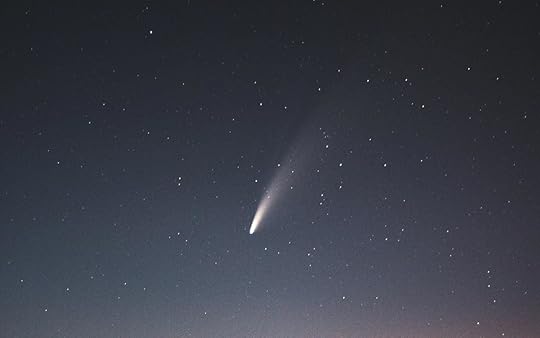
The story method, on the other hand, requires us to add a narrative to the association, such as:
Halley’s comet is crashing into an Allan key in the hands of Sharon who finds it burning hot and hands it to Andrew.
The story method can possibly be used without a Memory Palace. However, stories have parts. And those parts exist somewhere in your brain which means they are inherently spatially located.
I think you’ll find it a lot less mentally taxing to lay out any narrative elements you use in a Memory Palace.
Another way to approach the story method is to use a movie or novel plot you know well.
For example, let’s say you have mentally reduced The Matrix series down to three scenes: the hotel, the desert of the real, and Neo’s cabin on Morpheus’ ship.
For the first piece of information you want to remember, you would use the first room and perhaps Trinity doing her flying kick. Then you would move on to the next location for the next piece of information.
This example shows how stories are always spatial in nature from another angle… after all, if they don’t take place somewhere… how can they be stories?
Ultimately, there is no right or wrong to this application. It basically comes down to your level of skill, the context, and the nature of the information.
I personally would not add a story step while memorizing names in a live setting — and tend to create my associations on the fly rather than draw upon stock images. But if a stock image makes sense, I’ll certainly use it.
Major System and Dominic System
When it comes to associative imagery, the alphabet is a great tool. But it can also be mixed with numbers.
The Major System (often called the Major Method) helps you associate a consonant with each digit from 0-9. This mnemonic device has been in use since the Katapayadi of ancient India.
A more common approach that has been in use since the 1700s looks like this:

A more recent innovation is the Dominic System. It has some key differences, so make sure to study both.
00-99 PAO
PAO stands for Person, Action, Object. Basically, you’re taking the Major System and using it to help you make words from numbers.
Here are some examples from mine:
01 – Sad (tragedy mask)
02 – Sun (from the movie Sunshine)
31 – Mad Magazine mascot (often dressed as a maid)
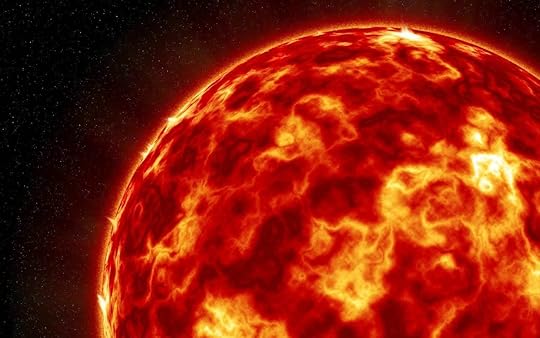
Notice that I’ve put some concrete indicators in parentheses. This is because “sad” is not very evocative. It’s just a concept.
But when I think of a tragedy mask, it still links to the concept of sadness. To make it even more specific, I think of the tragedy mask worn by William Shatner in Oedipus Rex.
Mind Maps
Tony Buzan is one of the greatest innovators of mind mapping, but he says in Mind Map Mastery that he abandoned this technique for improving memory back in the 70s.
He focused more on using keywords that help with creativity, problem-solving, and planning.
I feel that the conclusion to remove their use as a memorization tool was premature. If you would like to learn how to combine mind maps with Memory Palaces, for example, here’s a simple way to also add in the Major System for incredible results:
https://www.youtube.com/watch?v=LIhHK...
As you can see, it’s fun to mix keywords with the Major Method on paper in a way that turns the mind map into a simple Memory Palace.
And this is really just the beginning when it comes to learning how to remember things.
It’s not just that there are a TON of mnemonic devices to choose from. It’s that we get to delight in how they can be mixed and matched in so many ways.
Mnemonic Techniques and Strategies for Remembering Things
Now, you might be wondering… how do you apply all of these techniques strategically?
Good question!
The answer is that you need to explore on your own, ideally based on a clearly defined learning goal.

That said, here are some suggestions.
Mnemonic Strategy #1: How to Memorize Numbers
For learning numbers, you’ll want to have either the Major System or the Dominic System. Nothing will be lost if you develop skills with both. In fact, that is highly recommended.
You can even consider learning another version called The Shadow if you’re really ambitious. My friend and fellow memory expert Braden Adams talks about this technique here.
Mnemonic Strategy #2: How to Learn a Language
For learning languages, a solid Memory Palace Network is advised.
This means having one Memory Palace per most letters of the alphabet. (Skip x, y, z, etc. if you can’t come up with solutions. Just gather as many together as you can.)
If you have a Major System prepared, you can use this to help with memorizing words, such as using your image for 90 when you encounter a “bas” sound, etc.
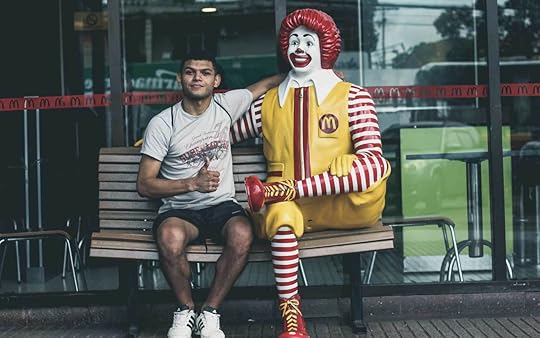
Mnemonic Strategy #3: How to Memorize Names
For memorizing names, some people like to have prepared associations ready to go. For example, if they meet a Ron, they’ll use Ronald McDonald.
However, the world has evolved a lot and we’re increasingly in contact with people who have diverse names. For that, you’ll want to make sure your peg system is very robust.
Mnemonic Strategy #4: How to Memorize Music
For memorizing music, the Major System will be a must.
Here’s how to memorize a song — the post is very detailed and shows you how to turn your instrument into a Memory Palace to combine with the number system you choose.
Mnemonic Strategy #5: How to Memorize a Speech
For memorizing a speech, you can use acronyms or a Memory Palace. I’ve done a combination of both over the years, and sometimes will place acronyms in a Memory Palace.

Memory Palace using an acronym as a mnemonic device
For memorizing playing cards, most people take a Major System and develop it into a 00-99 PAO.
For example, in my system, the Ace of Spades is 11. Using the Major, the image is a toad. To make it more specific, I use the Warner Brothers toad. Each card has an image like this and then I lay them out in a particular Memory Palace I prefer for memorizing cards.
Guess what? there are even more mnemonic strategies you can learn (not to be confused with memory strategies). Treat them like missions and practice consistently. You will succeed.
Please don’t think all of this is too difficult or complex. Frankly, the problem with the memory world is that so many teachers out there dumb it all down.
But when someone finally shows how all of these mnemonic devices work together in unison, you wind up getting great successes like James Gerwing winning the 2019 Canadian Memory Championship — as a retiree!
I Love Using A Combination Of Mnemonic Strategies — How About You?
We’re incredibly lucky.
Although it can be confusing, the Internet has enabled dozens of memory competitors, memory athletes, and plain ol’ memory fanatics like me to create tons of free content for the world.
Even though it’s easy to get lost in the intricacies, remember: Memory is not a thing. It is a behavior.
Dive into each of the approaches you learned today.
Really dig deep into their nuances through practice.
Let me know if you found this guide helpful and comment below. If there’s a mnemonic device I missed, please share it so I can update this post. All of us will be eternally grateful.
And if you want to learn more about how to make the most of your new mnemonic strategies using a Memory Palace, pick up your free copy of the memory improvement kit today!
September 10, 2020
How to Concentrate on Studies: 11 Research-Backed Tips
 Wouldn’t it be great if you could snap your fingers and instantly concentrate on studies?
Wouldn’t it be great if you could snap your fingers and instantly concentrate on studies?
The problem is… you know some people can. But no one has shown you how.
Today’s your lucky day because I once suffered from an attention span so frazzled, I nearly had to drop out of grad school. But I turned it all around and you can too.
Easily.
Why am I so convinced?
The reality is this: There are tons of science-backed techniques that help students of every age concentrate on studies.
It doesn’t have to do with your personality or your discipline. It has to do with how you design your learning life as a kind of game you can win.
So if you’re ready to start stacking the chips in your favor, let’s get started.
Here’s what this post will cover:
Why Can’t I Focus On Studying?
How to Focus on Studying: 11 Proven Strategies
1. Create Clear and Achievable Goals
2. Keep A Rigorous Study Schedule
3. Use Spatial Anchors
4. Block Out Distractions The Easy Way
5. Train Your Attention Span
6. Place Long-Term Outcomes First
7. Put Accountability On Autopilot
8. Track Your Progress
9. Use Tangible Study Tools
10. Keep Your Body Fit
11. Breathe and Meditate
How to Concentrate On Studies The Easy Way
Ready to learn how to concentrate on studies? Let’s go.
Why Can’t I Focus On Studying?
The main reason people can’t concentrate isn’t because they don’t know how to focus on studying.
It’s usually because they:
Lack clearly defined goals
Haven’t scheduled specific study times
Do not study in specially designated areas
Fail to strategically block out distractions
Have not trained their attention span
Focus on getting good grades instead of developing skills
Do not seek accountability from mentors, peers, or themselves
Have no tracking systems in place
Rely on smartphones and apps instead traditional and tangible study tools like physical notebooks and flashcards
Include no dietary and physical exercises regimes in their daily routines
Do not meditate or have knowledge of breathing exercises that can create a state of presence
To sum all of this up based on research, failing to attend to each of these points keeps you trapped in endless loops of mind wandering. According to scientists in the journal NeuroImage, too many learners have no strategies to help them focus on tasks.

It’s not just that people have multiple tabs open on their browsers and allow themselves to be endlessly distracted by notifications on their phones. They cannot enter what is commonly called “flow” (governed by the Task Positive Network of the brain) because of all the factors listed above.
The good news is that even the simple act of breathing strategically can calm your nerves so thoroughly within seconds that you can get through far worse than lack of concentration while studying. You can potentially even land a plane suffering mechanical failure!
How to Focus on Studying: 11 Proven Strategies
Let’s look at each of the eleven strategies in detail.
1. Create Clear and Achievable Goals
Have you ever caught yourself saying something like, “I’m going to read 11 articles by the end of the day and remember everything!”
If so, I’ve been there. And guess what? It never works.
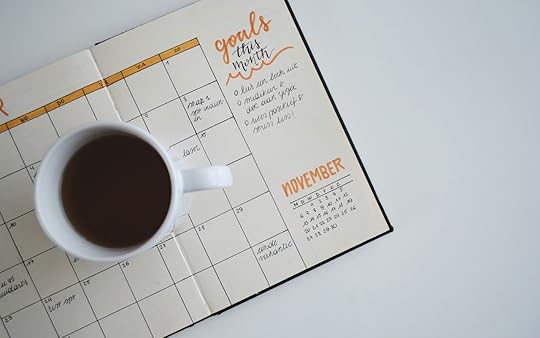
Instead, I’ve learned to create goals I can actually achieve. Long before James Clear wrote his international hit Atomic Habits, I got so sick and frustrated with my fanciful overreaching that I knew I had to change.
I took a long hard look at how I was reading and using memory techniques and realized I was trying to have it all instead of focusing on only the most relevant information.
I started to think of it as the Faust Syndrome. (Faust is a fictional character who sold his soul to the devil in order to enjoy universal knowledge of everything. He ultimately realized knowing everything in exchange for eternal torment really wasn’t worth anything compared to the satisfaction of functional knowledge.)
Although it would be many years before I heard about the 80/20 principle, I was aware of something called “the rule of redundancy.”
Basically, it means most of the words in a book have nothing to do with its core points. Rather, they’re needed for context and innuendo.
So instead of trying to memorize the entire book, as I wanted to do (essentially selling my soul to the devil for nothing in return), I learned to set a simple goal: I would extract and memorize just 3 points from each chapter in a book and nothing more.
Here’s how it works:
https://www.youtube.com/watch?v=eIQRi...
Over the years, some people have smirked at the system I came up with, but I just ignore their criticism.
And I’m glad I did because I wound up picking up a second MA in Media and Communications while completing my PhD! This was possible because I learned to set realistic goals and only extract the most important information from books.
And it all works very well because (so long as you’re using memory techniques correctly) your brain will fill in the gaps. You’ll remember far more than just three points per chapter, especially if you also use other accelerated learning techniques.
2. Keep A Rigorous Study Schedule
If you’re anything like me, you don’t always feel like studying.
But let’s face the facts:
Time is flowing by whether we like it or not. And exam dates aren’t going to be changed just because we don’t feel ready.

During my PhD, I sat for two field exams and a dissertation defense. Because I had to travel from either New York or Berlin to Toronto to attend them, not only could I not easily extend the dates — it would have incurred a great cost if I did.
That’s why I always scheduled time in the morning, afternoons, and evenings for reading. Three reading sessions a day still feels right for me years later, too. (I completed my doctorate in 2009.)
Three reading sessions a day might be too much or too little for you, but the exact amount is less important than the consistency.
As Graham Allcott points out in his excellent book How to be a Knowledge Ninja, “it’s only your routine that matters.” And he really means YOUR routine.
As Allcott explains, too many people are ruled by their “lizard brain.” They’re scanning the environment and comparing themselves to others. But he suggests you develop your own checklists and explore your own personality to help design it.
He’s right, and from my experience I can tell you this:
Expect your schedule preferences to change.
For example, for many years I used to love reading in the morning. Now I prefer the evening. But I still read in the morning anyway, even if it’s just a few sentences. Usually I find that once I get a couple of words down the hatch, the rest flows in a lot easier.
And if you make it an iron-clad rule with no exceptions that you’ll read at least once sentence at the scheduled time, I think you’ll be delighted by how easy it is to keep reading.
3. Use Spatial Anchors
Nearly every morning I study in one of three places. It’s really important I have variety, and I’ll explain why.
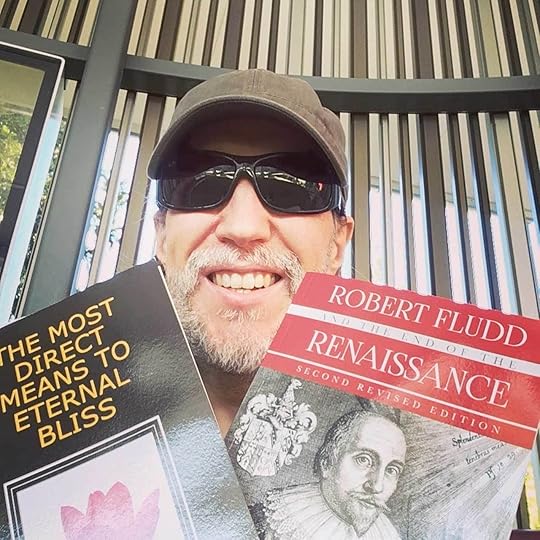
At the moment, I’m researching for a book that includes references to both Advaita Vedanta and the hermetic art of memory.
Frankly, some of the books are boring. But I can’t write a good book without references to them. I also won’t remember much if I don’t go through what is called “diffuse thinking” after taking notes from my reading.
Now, I just said that mind wandering is a bad thing and can be stopped by getting yourself in the zone. This remains true. However, there is a time when it works wonders. And that is before and after reading.
Learning expert Barbara Oakley explains this well in her popular Learning How to Learn course. Basically, your brain percolates the information at the neurochemical level while you’re taking a break — something walking between locations accelerates for reasons covered by Alex Pang in Rest: Why You Get More Done When You Work Less.
In fact, Pang suggests that the effects of diffuse thinking are so profound, you’re best served by carrying a notebook with you. He points out that both Tchaikovsky and Beethoven walked with journals, not to mention the film directors Billy Wilder and David Lean.
Moreover:
“Thomas Hobbes walked with a cane that had an inkwell built into the handle and would write on a piece of paper attached to a board. The great German mathematician David Hilbert wrote down ideas as he walked… Walking doesn’t look like an intellectual activity, and there are plenty of times when it’s purely utilitarian or recreational, but we can learn to use it to help us think better.” (an excerpt from Pang’s Rest)
The second reason having fixed locations is so powerful is called “matching conditions.” As Bruce Goldstein explains in his textbook Cognitive Psychology, he once needed to remember to bring a movie to a lecture.
As part of triggering his recall, he thought of his office first:
“The key to remembering the DVD was that I retrieved the thought ‘Bring the DVD’ by returning to the place where I had originally encoded that thought. This example illustrates the following basic principle: Retrieval can be increased by matching the conditions at retrieval to the conditions that existed at encoding.”
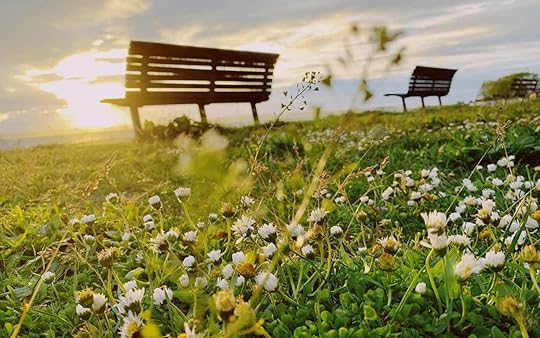
The success of the Memory Palace technique is based on the fact that our minds “match” information with space.
When I was sitting in those field exams and answered the questions that determined my ability to earn the PhD, I often thought back to the locations where I’d read the books I was responsible for knowing. And I use the exact same “matching conditions” to remember what I want to write about in my books.
Finally, when it comes to rotating the exact locations where I read, I do this because novelty has been shown to improve memory. I have a few places I read in parks, a few favorite cafes, and I routinely visit new cafes. Even if I suspect that they will not have coffee, I give it a try anyway.
The research I’ve read always proves true: I remember more of what I read simply by making a point of combining walking to and from anchored and new places to study.
4. Block Out Distractions The Easy Way
Actually, what I consider the easy way might strike you as incredibly hard. That’s because those “study walks” I just mentioned usually take place without my smartphone.

That’s right. I kiss my wife goodbye and tell her I’ll be back when I get back. Then, I go out with nothing more than my study materials and note books. (Sometimes I bring a camera to grab a pic for social media, but not always. Even the thought of documenting my studies can be distracting!)
Whether or not you go to these extremes, the point is the same: If you don’t have anything that rings, pings, or buzzes near you, it can’t distract you. The sounds of traffic, cafe chatter, and birds in the trees can actually help you focus if it’s in the background.
But some people think that part of our minds scan the environment for distractions from our phones. It’s sometimes called “anticipation addiction” and is related strongly to gambling.
Reading from physical books instead of a device is also very useful. Not everyone agrees with me, but I rarely read from digital anymore, preferring print for a few reasons:
https://www.youtube.com/watch?v=er-k8...
First, print has no multiple tabs. It won’t vibrate or spike your dopamine with a notification.
Second, you can use the pages of books as mini-Memory Palaces. This feature is tremendously useful.
Third, your brain can track the space of physical books in a way that is impossible with digital books. I suggest you read The Case for Mental Imagery if you’re interested in more scientific research on just how important space is for learning and memory.
5. Train Your Attention Span
A lot of people think that brain training apps will improve their attention span.
Maybe.
But since we want to focus on information and be able to recall it under test conditions where we’re not allowed to access any kind of computer, does that approach really make sense?

Instead, seek out brain exercises that are not reliant on devices.
One of the best I know involves nothing more than memory techniques and a deck of playing cards.
You have to learn something called the Major System so you can give each card a unique image. Then, using a Memory Palace, you simply shuffle them up and memorize the unique order by making the images interact.
This simple exercise not only increases your attention span — it also helps you learn how to memorize information that is similar without any bleedthrough or what I think of as “borderblur.”
Learning to play an instrument or memorizing lyrics is also a great way to increase your attention span because performing music requires extended focus.
I practice what I preach in this regard, and even memorize songs in other languages just for the attention span benefits it brings. As a result, I never say “I can’t concentrate on studying.”
https://www.youtube.com/watch?v=dCyPV...
The best part? Scholar Gunter Kreutz has shown that singing also promotes healing and improves mood.
6. Place Long-Term Outcomes First
Instead of worrying about grades, focus on your vision.
Sure, I have quite a few A+ grades on my transcript. But guess what? No one cares, including me.

Instead, I completed all my degrees because I wanted to fulfill the vision of being a writer and teacher. If I had focused only on grades in the short term, I would have endlessly frustrated myself and felt empty later.
That’s why I’m so glad I just did the best I could and made sure I enjoyed the journey along the way. In addition to working on my degrees, I also worked on my writing. I did not enjoy writing academic papers one bit, but loved every moment working on poetry and novels.
And I supplemented many of the dry and boring film theory textbooks I needed to read by working at the legendary Queen Video and promoting cool events.
These supplementary experiments taught me how to run a small publishing enterprise and organize events — key skills I have drawn upon far more than my knowledge of Shakespeare. Sure, I got an A+ in “Shakespeare and his Contemporaries” in a third year English course at York University, but my career success in no way relies on that grade.
It never will either, but I draw upon the sum of all the experiences I added along the way to practice the comprehensive professionalism that has enabled me to run the Magnetic Memory Method Mission for nearly a decade.
What’s your vision? Focus on that and the grades will surely follow.
7. Put Accountability On Autopilot
There are at least three levels of accountability:
Accountability to yourself
Accountability to another person
Accountability to a group
Sadly, some people don’t even practice one of these layers. And no doubt: effort will be involved and that will scare some people away.

But what if there was an easy way to “set and forget” accountability?
There is!
If you’re going to be accountable to yourself, I recommend The Freedom Journal. Other journals will do, but this one helps you create achievable study goals — and it’s hard to ignore the physical copy when you anchor it to space in your environment.
The way to get yourself motivated using another person can be summed up in three words: hire a coach.
If you’re skeptical that it works, just read some of the science that compares different levels of effectiveness based on the kind of coaching you get. When you pay for coaching and get the sessions on the calendar, your investment itself will pay off because loss avoidance will increase your “show up” and implementation rates.
As for groups, this approach can take a little more work, but it’s worth it.

Throughout my university years, I participated in study groups. We made it simple on ourselves: We met immediately after our classes. The best part? We walked from the classroom to the campus pub, giving our brains a bit of time for diffuse thinking before piling back into our books.
In grad school, my study groups were a bit more sophisticated. Since there was always more reading than anyone could expect to cover thoroughly, we would assign presentations to ourselves.
That way, if you had to cover five books or articles, you could scan four of them and focus deeply on just one of them. Then, your fellow study group participants let you know the most important points of the book they focused on.
Upon review, your brain had been primed to perceive those big points and all the minutia stuck better thanks to having your radar switched on.
To make sure it happened on autopilot, we scheduled each date throughout the semester in advance.
Sure, sometimes things happened and people couldn’t attend. But overall, by selecting serious students in advance, things went smoothly and we all were able to cover far more territory as a group than would have been possible as students on our own.
In sum, it doesn’t have to be lonely along the extra mile.
8. Track Your Progress
Too many students fail to concentrate because their responsibilities aren’t mentally manageable.

They’ve got syllabi scattered across multiple folders in their computers, or worse, they’ve done little more than bookmark pages on their university website. That’s a recipe for disaster.
Instead:
Translate all of your reading obligations onto a physical calendar, including the titles of all the books and articles.
Print out your syllabi as well and paste them into individual notebooks for each course.
Then, schedule your reading and check off or cross out each book after you’ve completed it. You might even want to use multiple colors, such as blue for the first read, green for the second and red for the third.
As part of tracking your progress, put rewards in place. You can assign a movie night, museum visit or anything healthy and fun you love to do for after you complete a set of study tasks.
When it comes to your writing assignments, I used to keep track of the number of words I wrote on a daily basis. I also went out of my way to complete reading early so I could get writing started early.
That allowed me to consult with my teachers in advance to see if I was on the right track or if they had any additional reading they thought might supplement my research.
Without tracking my progress, I wouldn’t have created the spare time for seeking out their advice, and if I hadn’t gotten to them early enough in the semester, they wouldn’t have had time to give it.
9. Use Tangible Study Tools
Far too many students dump everything in Evernote or some other app and then wonder why they can’t find anything. My friend Charles Bryd has shown just how effective such tools can be — but if you’re like me, it’s a losing gambit.
If you’re struggling to remember your notes, give physical notebooks and flashcard or index cards a try.
I never suggest people throw out technology and am a huge fan of computers myself. But if you’re struggling, digital fasting and working with physical tools like pen and paper could be a huge boon for you.

Mind Mapping is one technique I highly recommend you explore. It’s not a magic bullet, but when it comes to focusing on big picture ideas and digging deeper into the minutiae, it’s really powerful.
It can also help you remember to study and work on assignments, which is one reason why I keep my Memory Journals where I can see them — and often carry them with me to those cafes I mentioned.
Frankly, it’s darn hard to forget your study commitments when your tools are too big to ignore!
10. Keep Your Body Fit
The Internet is loaded with dietary and exercise advice. This should be non-controversial in every way — endless scientific studies show that movement increases blood flow to the brain, for example.

There are also tons of foods that are proven to improve memory.
I don’t think we have to dwell on these points. It’s just obvious that you need to care for your body if you want the ability to focus on studying with any success.
11. Breathe and Meditate
I was lucky to learn how to meditate at a young age. But it wasn’t really until I was in my PhD years that I started a consistent, daily practice. Around the same time, I learned a number of breathing exercises.

Breathing has been shown to assist mental functioning. The trick is in remembering to watch your breathing.
Concentration meditation is a great way to assist the self-observation needed to monitor your breath.
Here’s a simple exercise:
When you’re reading a book, focus on your nostrils and imagine that you’re inhaling the words up from the page. Then, when writing your notes, imagine you are exhaling them onto the page — or assisting your hand as it writes with your breath.
This action can take a bit of practice, but it is worth it. One of my favorites sources of breathing exercises is Let Every Breath by Vladimir Vasiliev.
How to Concentrate On Studies The Easy Way
I know I’ve shared a TON of information in this post.
But there is an easy way to get started: Pick just one of the tips I’ve shared above. Put it into action. Then add another.
Soon, you’ll have a nice “habit stack” that will create what I call “cruising altitude.” What I mean by that is exactly what pilots talk about when flying aircraft — that wonderful sense of peace as you fly through the air.
Sure, there’s going to be turbulence as you study. Life happens and sometimes you have to make changes when you least expect something to come up.
But the more of these study survival techniques you have, the sooner and easier you’ll be able to get yourself back on course.
That’s how I managed to be so stable during my doctoral studies that I had time and attention span to pick up a second Masters degree while writing my dissertation.
How I pulled it off isn’t rocket science. It’s just normal science, and I hope you find the research materials I shared with you today useful supplementary reading.
Let me know if there’s anything I’m missing — and what do you say?
If you’re ready to concentrate on studies in a whole new way and want to learn how to use Memory Palaces to help you focus on studying, sign up for my free training today.
September 1, 2020
The Ultimate Guide to the Link and Story Methods
 Are you confused by the link method and the story method?
Are you confused by the link method and the story method?
Seriously, the sheer number of definitions is enough to make your mind melt.
Well, never fear. On this page, I’m going to do my best to reduce the confusion.
Because the reality is this:
Linking and the use of stories to help you learn faster and remember more are tied at the hip.
But… each has its own superpower. And it’s the differences between them and how you apply the right mnemonic device in the right situation that matters.
So if you want to know how to memorize a story so you can learn faster, or want to leave the narrative aspect behind and go for pure linking, this training is for you.
Here’s what this post will cover:
What Is The Linking Method?
Link Method Examples
What Is The Story Method?
Story Method Examples
Link Method Psychology
What Is The Linking Method?
https://www.youtube.com/watch?v=sH5i2...
A link is literally part of a chain. If you have a gold necklace, for example, each loop links to the next one until the circle is completed by a clasp.

When it comes to memory techniques, a link is the element we use to help us create an association that “triggers” information we want to remember.
In many memory courses and books, linking is described in terms of a chain. Everyone from Bruno Furst to Harry Lorayne presents it this way.
For example, in some memory trainings, the memory expert will give you a list of words like:
Hero
Drill
Spacecraft
Music
They will suggest that you:
Create an image that reminds you of the first word in the chain, and
“Link” the next word to the first.
For example, you would imagine that the hero uses a drill on a spacecraft that is blasting out music.
This way of using linking sounds a bit like a story, doesn’t it?
If so, then it is the story that is doing the linking.
And no doubt, having a narrative to think back to is helpful in recalling the list. It also has a weakness though. If you can’t remember how the story started, or a link in your chain goes “missing,” then your hopes of remembering the list quickly falls apart.
When Is This Version Of The Link Method Helpful?
Do you want the truth?
I really don’t know. It’s up for you to practice it and use it in different situations.
What I can tell you is that I rarely if ever use it this way. I don’t memorize random words for no reason, and I personally think it’s a shame memory books use such examples.

Really, the only time you need to memorize random words is when it’s actually not that random. I’m talking about when you go shopping and need to get tomatoes, carrots, celery, and bread. In such a case, it does make sense to see a tomato stabbing celery and bread with a carrot.
But why waste time on memorizing such a list when you could just write it down? If you’re going to memorize your shopping list, at least get a bang for your buck by memorizing it in a foreign language.
That extra step will give you practice so you can memorize complex terms, like medical definitions, more foreign language vocabulary, and names for new people you meet or important people you learn about.
The Ultimate Linking Supplement: Spatial Linking
The Memory Palace technique – sometimes called the Method of Loci or the Roman Room Method – is the ultimate link for a few reasons.
First, let’s think about that necklace again.
Rather than using a memory system where your links must provide both the connection and the trigger for the target information, the Memory Palace lets you divide the two things.
So imagine a necklace with eight links. That’s like a Memory Palace with two rooms. In each room, you simply use the four corners in each.
(Of course, you can make much bigger Memory Palaces with many more Magnetic Stations, but let’s just keep it simple for the sake of explanation.)
Now what you’ve done is created a no-brainer, easy-to-follow journey with rooms as the linking structure. Then, you can place your hero on or near corner one of your Memory Palace. That hero is linked to the space itself and you don’t need to “link” it to the drill on the next corner.

NOTE: I call these corners “Magnetic Stations.” I use this term for two reasons:
First, it’s like each place in the Memory Palace has a fridge and my associations are like a fridge magnet. I can then use the imagery to stick information I want to memorize in place, just like I would store concert tickets in real life.
Second, magnets have the ability to repel certain things. For example, when I use this kind of linking, my mind pushes away all the distractions. I’m focused just on the information on hand.
Now, this doesn’t mean I can’t have the hero and the drill interact. If it’s useful to do so, the hero can move from the first corner to the second. But I’d rather have some kind of image that is working to help me memorize the word “hero” first before moving on to the next word.
My “link” for that word would drill into the word itself, leading to the use of something like a favorite superhero eating a Hershey chocolate bar in a weird way before blowing a smoke ring. I explain more here:
https://www.youtube.com/watch?v=l5-Yr...
Now, there is a story element going on here, but it is not the story method of such. Rather, it’s more like having a vignette on each and every station of the Memory Palace.
The real benefit of the Memory Palace as a base or meta-linking structure is how it helps with recall. You don’t have to think back to how the story started. You can think back to where you placed the first link, which gives you two chances to kickstart your list of associations.
Link Method Examples That Will Make Your Memory Pop
There are potentially millions of examples one could give.

The problem is this:
In 90 BCE, the unknown author of Rhetorica Ad Herennium warned against weakening students by giving too many examples. It counsels the teacher of memory to give only a few so that students quickly learn to create their own. It’s like the old saying goes: Teach people to fish so they can feed themselves.
I actually think we need to take it further:
Teach people to fish, hunt, and farm so they can eat whatever they want. Eating fish every day is boring!
Jokes aside, here are some of the best blog posts on my site that are packed with mnemonic examples:
How to Memorize the Presidents
In addition to the best coming from your own efforts, great mnemonic examples are the ones that:
Connect with multi-sensory levels of your imagination
Come from your personal experiences with people, locations and pop culture
Dig into the alphabet based on the “hero” example I gave above
Why is the alphabet so crucial?
The answer is simple:
It’s the ultimate necklace! Think about it: A-Z is a pre-memorized set of “locations”.
So if you want to always have “links” ready to go, get out a piece of paper and write out associations for each letter of the alphabet. Like this:
Z = Zorro
Y = Yankovich (Weird Al)
X = Xylophone
W = Weathervane
Etc…
Go for a mixture of objects and people.

Ideally, all of your objects will connect with people or places in some way. For example, I don’t just think of a weathervane in an abstract way. I’m thinking specifically about the weathervane used as a weapon in the movie Warlock.
Likewise, with Zorro. I think specifically of Antonio Banderas’ performance of this character. That was particularly important when I was learning German, a language packed with Z words.
For example, “zerbrechlich” means “fragile.” I simply saw Banderas as Zorro at a Berlin movie theatre with a few other images to help me memorize the sound and meaning of this word.
The next steps are to make sure the “links” are multi-sensory and then add some more German words. 5-10 at a time in a single Memory Palace is a decent sweet spot, though some people can memorize many more.
It’s just a matter of:
Thoroughly studying the techniques
Preparing your Memory Palaces and images in advance
Practicing through consistent application
Next, let’s look at the story memory technique.
What Is The Story Method?
So far, we’ve seen that story elements play into every variation of the link method.
But you can also:
Use stories themselves as sources for a Memory Palace
Memorize stories using story structure
Using A Story To Memorize
In the first case, you’d be taking locations from novels and movies and using them to create a Memory Palace. For example, at the beginning of The Name of the Rose, we meet Adso in his chamber.
Even without the movie version to show us an image of Adso where he sleeps, we can imagine a medieval bedroom. Since most rooms have four walls, we can use them as a Memory Palace.
To use this version of the story method, pick a movie or novel and make an inventory of locations you can remember. Ideally, you work based not on every little last detail — instead, work with just what comes naturally to mind.

For example, in The Matrix, I readily remember:
The hotel
Neo’s apartment
The dance club
The interrogation room
The desert of the real
The bridge of Morpheus’ ship
Neo’s chamber
The Oracle’s waiting room
The Oracle’s kitchen
The subway
The hallway with the final showdown between Neo and Agent Smith
While I was writing the list, I remembered even more, such as the street with the woman in the red dress, the dojo, and more. Just going through one movie makes for incredible memory exercise!
To use this version of the story method, mentally arrange these locations to suit your learning project. Using the chronological order we see them in the movie makes the most sense, but you could also arrange them alphabetically or in whatever way feels right for you.
Next, start to “link” your information inside the story. Now, unlike your home, this kind of Memory Palace comes “pre-loaded” with all kinds of imagery to work with.
For example, if you want to memorize a phrase like meliora sequimur. This is the Latin motto for Brisbane, which means, “We aim for better things.”
You can take the mess hall on Morpheus’ ship and have Mouse complain about the “meal’s aura” “meliora” and have a giant second-hand from a clock ticking over his head. From there, you have many choices.

However, you can probably already tell… The story memory technique is not the greatest method for speed, efficiency, or even effectiveness.
I haven’t talked to every memory expert under the sun, but so far I don’t know anyone who works this way — though Idriz Zogaj mentions something like this when speaking about a memory competitor he knows, but the explanation is second hand and therefore a bit vague.
That said, a close parallel is the use of video games. I’ve used Donkey Kong and have heard of people using the Legend of Zelda, Skyrim, and all kinds of fantasy locations to help them learn faster and remember more. It’s really up to you to learn and practice the techniques.
How to Memorize a Story
Now, you’re probably thinking I’m going to suggest the Memory Palace technique.
Not exactly.
But before we talk about memorizing stories, we need to consider:
What exactly is it that we want to memorize from or of the story?

Ask yourself:
Do you want to recite a story verbatim?
Do you want to recite the highlights?
If it’s just the central points of the story, then here’s what I suggest: Memorize story architecture instead.
Most stories worth memorizing are built like this:
The hero is haunted by something from the past
The hero experiences a conflict between their conscious desires and unconscious needs
The hero struggles with some kind of social force (like a job they hate)
The hero encounters a dilemma and needs to act but has no easy solution
The hero faces a crisis that demands a decision — and they usually have to take the least likable solution
The hero needs allies or has to learn some kind of skill
The hero meets an enemy and has a battle
The hero defeats the enemy, usually be learning something that dissolves the conflict between the conscious desire and unconscious need
The hero’s victory resolves into a better world
Obviously, there are endless variations and other potential plot points, such as the call to adventure and refusal of the call.
The point is that when you know the basic plot structures, all stories become instantly easier to memorize. Because you can see the skeleton, the tendons and muscle on the surface settle into your memory with much greater ease.
Story Method Examples
Personally, I’ve used my deeply internalized knowledge of story structure in many ways.
For example, when I tell people about how a story went, I can unfold the details pretty much as they happened because I simply follow the configuration of plot details. I was also a film studies professor for a number of years, so that helped.
But it’s also helpful for when you need to write stories.
For example, can you see the ghost haunting me in this story? How about the crises and the decision?
https://www.youtube.com/watch?v=kvtYj...
If you can remember these plot points as a form of memory linkage, every story you tell will come out in much more structured and interesting ways.
Link Method Psychology: The Mindset of a Memory Master
Phew — that was quite a deep dive into linking!
In sum, if you need to memorize a list of items, having the words themselves interact with each other based on mental imagery can work.
However, if you need to memorize information that is a bit more ambitious, you’ll probably want more robust techniques.
The good news is that neuroscientists like David Eagleman think the brain has space for a zettabyte of information. And like a computer’s hard drive, everything you memorize requires space.

My suggestion is that before you start practicing any of the memory techniques available to you now, think about your goals first.
Then pick the technique that is most likely to help you accomplish your mission.
If it’s just memorizing grocery lists, then you’re good to go with the information on this page. Of course, a lot of people will tell you it’s the easiest, but that’s only true if you have small goals.
Bottom line: if you want to not only deliver speeches from the top of your head, but know the stories you’re sharing deeply, it only makes sense to memorize story structure.
You will quickly go beyond the story method and become an expert in it, rapidly memorizing story details almost on autopilot.
So what do you say? Are you ready to give either of these a try? Or if you want more simple and fun memory improvement tools to choose from, sign up for my free Memory Improvement Kit today.
August 19, 2020
Long-Term Memory Loss: 5 POWERFUL Prevention Tips
 I have come to this area a hundred times before.
I have come to this area a hundred times before.
Yet, I’m lost in this maze of streets now.
Where’s my schoolmate’s house?
Wait, schoolmate, or was she my colleague at work?
Sound familiar?
That’s your long-term memory acting up!
So, what causes long-term memory loss? What are its symptoms? And, how do you treat or prevent it?
In this article, I’ll tell you all about long-term memory loss, how to identify it, and its treatment. I’ll also show you a powerful, magnetic way to improve your memory so it stays intact even as you age!
Here’s what I’ll cover:
What is Long-Term Memory?
What is Long-Term Memory Loss?
Symptoms of Long-Term Memory Loss
What Causes Long-Term Memory Loss?
How is Long-Term Memory Loss Diagnosed?
How to Treat Long-Term Memory Loss
5 Ways to Boost Memory and Prevent Long-Term Memory Loss
Let’s start with a quick look at long-term memory.
What is Long-Term Memory?
Long-term memory is how your brain – over many years – encodes and remembers events, facts, and how to do things. For example, your high school teacher’s name, the route to the house you stayed in 20 years ago, and so on.

How is it different from short-term memory?
Short-term memory (or working memory) is how your brain stores things temporarily — a grocery list, or what you had for lunch today.
The more you recall memories, the better they get consolidated into permanent, long-term memories.
So, how are these memories stored in the brain?
Short-term memory activates the prefrontal cortex, frontal lobe, and parietal lobe of the brain.
The hippocampus brain region is responsible for the consolidation of info from short-term to long-term memory.
And, your long-term memory is associated with the prefrontal cortex, cerebrum, frontal lobe, and medial temporal lobe.
Types of Long-Term Memory
Your brain stores many types of long-term memories, including semantic memory, episodic memory, procedural memory, implicit memory (non-declarative memory), and explicit memory (declarative memory).
Now for a deep-dive into all things related to long-term memory loss!
What is Long-Term Memory Loss?
When you find it difficult to remember information stored in your long-term memory, you call it long-term memory loss.

Is long-term memory loss the same as dementia?
No. Long-term memory impairment isn’t the same as dementia.
But, it can be a sign of dementia.
According to the Alzheimer’s Association, dementia is an umbrella term for “diseases and conditions characterized by a decline in memory, language, problem-solving, and other thinking skills.” It could affect your ability to perform daily chores.
Different types of dementia
There are many types of dementia:
Alzheimer’s disease: Alzheimer’s disease is a kind of cognitive impairment that progressively destroys your episodic memory, thinking abilities, and the ability to do even simple tasks like writing.
Around 10% of Americans above 65 years of age are said to have Alzheimer’s disease. And Alzheimer’s disease happens to be the most common cause of dementia.
How does Alzheimer’s disease affect long-term memory?
The first symptom of Alzheimer’s disease is short-term memory impairment. Long-term memory impairment follows, along with other symptoms of Alzheimer’s disease or dementia.
Lewy body dementia: This is an umbrella term for Dementia with Lewy Bodies (DLB) and Parkinson’s disease dementia — both characterized by abnormal deposits of the alpha-synuclein protein in the brain.
It usually sets in after the age of 50. Dementia symptoms are episodic loss of long-term memory, movement problems, and decision-making difficulties.
Frontotemporal dementia: This dementia is caused by progressive degeneration of the frontal and temporal lobe of the brain. It usually starts with behavior changes, and could eventually lead to severe memory impairment.
Vascular dementia: This is caused by reduced blood flow to the brain due to stroke or any other vascular brain damage. It causes progressive memory impairment and affects your attention and problem-solving abilities.
Remember, while memory impairment is a symptom of dementia, having long-term memory impairment doesn’t always mean you have dementia.
Also, note that dementia is often confused with cognitive impairment conditions like amnesia.
People with amnesia find it tough to form new memories. Others are unable to recall facts or past experiences. The two main types of amnesia are anterograde amnesia (characterized by short-term memory loss), and retrograde amnesia (inability to recall long-term memories that happened before developing amnesia).

So, is long-term memory loss different from Mild Cognitive Impairment (MCI)?
Mild cognitive impairment (MCI) is the intermediate stage between normal age-related memory difficulties and dementia.
People diagnosed with Mild Cognitive Impairment have significant short-term memory impairment. But, for some people, it will eventually progress to severe long-term memory impairment and even dementia due to Alzheimer’s disease.
How is long-term memory loss different from short term memory loss?
You’d be able to remember incidents from 15 years ago when you experience short-term memory loss, but you’d forget details of what happened 15 minutes ago.
Tests for short-term memory impairment
Your doctor would start with a medical history. This may be followed by cognitive function tests, blood tests, MRI or CT scans, or cerebral angiography.
How do you prevent short-term memory loss?
The simplest way to prevent short-term memory impairment is to practice various memory games, crossword puzzles, or sudoku.
Now, let’s look at the ways long-term cognitive impairment like Alzheimer’s disease manifests itself.
Symptoms of Long-Term Memory Loss
The main symptom of long-term memory impairment is forgetfulness of important things or events that happened earlier in your life.
Here are some examples:
Forgetting the name of the countries you’ve lived in
Mixing up names of people and words
Forgetfulness of common words
Losing your way in familiar places
Irritability and other mood changes
Let’s also look at some causes.
What Causes Long-Term Memory Loss?
Long-term memory problems could occur due to several reasons:
Anxiety and depression
Side effects of prescription drugs
Vitamin B-12 deficiency
Fatigue and sleep deprivation
Thyroid problems
Drug and alcohol misuse
Chemotherapy
Traumatic Brain Injury (TBI)
Brain tumor, encephalitis, stroke, epilepsy, transient ischemic attack, transient global amnesia
Sleep apnea
Kidney and liver disorders
Mild Cognitive Impairment
Dementia and Alzheimer’s disease

You may also wonder:
Does aging lead to memory loss?
Yes, your long-term memory can get weaker as you get older. So, occasional forgetfulness – or memory lapses like forgetting your new neighbor’s name – is normal.
This kind of forgetfulness is just a part of normal aging, and won’t affect your daily routines or the quality of your life.
But how do you know whether you should get medical help or not?
Let’s see.
When should you see a doctor?
Visit a doctor if:
Your memory problems start affecting your day-to-day activities
You had a head or brain injury
You’re disoriented or experience delirium
You have other symptoms like headaches, sluggishness, or vision problems
Why is it essential to diagnose long-term memory impairment?
Some people hide their memory problems due to fear of social rejection or family issues.
But, you should get any memory troubles diagnosed by a doctor, because in most cases it can be treated partially or entirely.
Early diagnosis of Alzheimer’s disease or dementia will help you sensitize yourself and loved ones about the illness, get proper care at home or at a facility, and get support from organizations like the Alzheimer’s Association.
So, how can it be diagnosed and treated?
How is Long-Term Memory Impairment Diagnosed?
To evaluate long-term memory problems, doctors typically perform the following steps:
Medical history, including your family history, and any medications you take.
Physical exam to check for symptoms like muscle weakness.
Neurologic exam and questions to check for signs of cognitive impairment. (For example, basic calculations, naming common items, and writing short sentences.)

Depending on the results, your doctor would prescribe some or all of the following:
A blood test to check for vitamin deficiencies
Urine tests
Nerve tests
Brain imaging tests like computerized axial tomography (CAT) scans or magnetic resonance imaging (MRI)
Neuropsychological testing to find the exact reason for memory problems like Alzheimer’s disease
A holistic examination and the results of these tests will help your doctor make a correct diagnosis.
Based on the diagnosis, your doctor might refer you to a geriatrician, neurologist, or psychiatrist to medically manage the condition. Or they may refer you to a psychologist to help you cope with memory problems.
How to treat long-term memory impairment
The treatment of long-term memory impairment will depend on the underlying reason for your mental condition.
For instance, if cognitive impairment is due to vitamin B12 deficiency, the doctor could prescribe vitamin B12 injections. Or, if the underlying cause of your forgetfulness was a brain tumor, then you’ll need surgery to remove the tumor.
But, think about this:
Wouldn’t it be better if you could prevent memory problems instead of seeking treatment after it reaches advanced stages like Alzheimer’s disease?
5 Stimulating Ways to Boost Memory and Prevent Long-Term Memory Loss
These simple yet powerful activities will help you boost your mental function.
They work by strengthening connections between your nerves, helping compensate for any cognitive impairment due to changes in your brain.

1. Build Memory Palaces using the Magnetic Memory Method
Building Memory Palaces is one of the easiest and most powerful mnemonic techniques to improve your long-term memory!
It allows you to develop and use your spatial memory while unlocking your episodic memory, procedural memory, semantic memory, and more.
When combined with Recall Rehearsal, you’ll be able to move information into long-term memory faster — and with predictable and reliable permanence.
You can also use any other memory technique inside of Memory Palaces (but not the other way around).
Here’s how to use it:
Imagine you need to understand DNA sequencing techniques and be able to recall them later.
Mentally walk through a familiar place like your home or office. Place the facts related to one DNA technique in your entrance hall, all facts related to the next technique in your bedroom cupboard, and so on.
As for remembering complex DNA-related words, associate them with everyday words already in your memory — e.g., to remember Cytosine, associate it with cycle.
Later, take a mental walk through your home, and you’ll easily recall all the DNA techniques.
And, the more you recall (recall rehearsal), the better you’ll commit this information to your long-term memory.

2. Do regular exercise
Regular physical workouts are proven to enhance the development of new brain cells in the brain. Exercise lowers the risk of age-related brain impairment and protects the brain against degenerative conditions like Alzheimer’s or Mild Cognitive Impairment.
In a study, a few participants were subject to MRI scans and a series of cognitive tests before and after a physical workout over a period of 12 weeks.
Researchers found that those who exercise regularly could remember things long after the workout was over.
So, set aside at least 30 minutes of your day to walk briskly, run, dance, or cross-country bike.
3. Eat a healthy diet
Consume a nutrient-rich, healthy diet to strengthen your long-term brain function.
Some of the best brain-boosting foods are:
Fatty fish (like salmon and mackerel)
Turmeric
Dark chocolate
Berries like strawberries and blueberries
Nuts and seeds like sunflower seeds and almonds
Whole grains like brown rice and oatmeal
Eggs
Vegetables like broccoli and kale
Green tea
Also, stay away from a high-calorie diet. Research shows that a high-calorie diet can impair memory if it causes inflammation in certain parts of the brain. In a 2009 study, women above the age of 60 who reduced their calorie intake by 30% showed significant improvement in their verbal memory scores.

4. Learn a new skill
A study showed that older people who learned a new skill showed a significant improvement in memory even when tested a year later.
A seemingly simple activity like knitting is a complex one for someone new to it. So learning it from scratch will boost your brain by strengthening the connections between various parts.
You could try to learn anything unfamiliar to you — digital photography, speaking a foreign language, playing a musical instrument, or even how to fix a motorbike.

5. Specific strategies for older people to cope with memory impairment
Older people can use these strategies to cope with forgetfulness and prevent memory decline, including symptoms of Alzheimer’s disease:
Get enough sleep
Make shopping lists
Keep a detailed calendar for the week
Play board games and card games regularly
Pay focused attention to one thing at a time
Keep all your things organized, like car keys and stationery
Stay socially active
Prevent Long-Term Memory Loss the Magnetic Way
Your long-term memory is bound to decline with age and due to several other factors.
However, these strategies – especially building Memory Palaces with the Magnetic Memory Method – are sure to keep your memory razor-sharp and prevent any long-term memory decline.
To learn more about how to create and use a Memory Palace, pick up your copy of my free training.
August 10, 2020
5 Proven Visualization Reading Strategies For Comprehension And Memory
 The reason why nearly every visualization reading strategy fails is simply this:
The reason why nearly every visualization reading strategy fails is simply this:
Visualization is not about seeing pictures in your mind.
It’s about multisensory visualization based on a strategic process with a well-defined outcome — better comprehension and memory.
If you’re tired of Googling “reading strategies visualization” and finding the same ineffective talk about creating “pictures in your head,” get ready for the real deal.
Here’s what this post will cover:
What Is Visualization In Reading?
3 POWERFUL Benefits of Visualizing While Reading With KAVE COGS
5 Easy to Implement Visualization Reading Strategies
The Ultimate Visualization in Reading Tactic
What Is Visualization In Reading?
Visualizing text while reading is just what it sounds like: mentally picturing images and ideas as you read. Simple, right?
Not so fast!

For example, how do you “see” the concept of visuality itself? Chances are, so many possible answers emerge that the visualization of visualization quickly falls apart.
Then there are those with aphantasia — these are people who are said to not have a “mind’s eye.” Yet other people actually see text versions of the words they hear. It’s called ticker tape synesthesia (and is very rare).
The fact of the matter is that there are many kinds of mental imagination, and to reduce visualization down to “pictures” is simply false.
Instead, it can be any of these imaginative processes:
Kinesthetic: imagine the feel and weight of binoculars and how they feel when you put them to your eyes.
Auditory: hear the sound of an electronic microscope zooming in on a subject.
Visual: specifically imagine the color of a camera’s metal and plastic parts, or how the light bounces off its surfaces.
Emotional: imagine how it feels to see a loved one again after a long time apart.
Conceptual: think about the concept of something being visual, perhaps by imagining the word itself appearing on a screen.
Olfactory: imagine the smell of rain after you’ve heard distant thunder and seen a lightning clap.
Gustatory: imagine the taste of that same rain.
Spatial: think about the size of your vision in terms of how far you can see or how big objects are relative to one another.
To remember all of these options, think of the words “KAVE COGS.” Then, whenever you read, move through each step strategically in order to make sure you’re using multisensory visualization.

The next step is relational, which makes any word instantly multi-sensory by creating associations.
Let’s take a well-known example:
“Life changes fast. Life changes in the instant. You sit down to dinner and life as you know it ends. The question of self-pity.”
— The Year Of Magical Thinking, Joan Didion
The first thing to do here is focus on the first word and think about images that relate to it.
For example: life cereal – life magazine – the tree of life.
Think of as many as you can in the beginning and run them each through KAVE COGS.
Then think about change. You might bring to mind a handful of coins or magicians you’ve seen who quickly change their uniforms. Again, run your choices through KAVE COGS.
“Fast” offers many options — and to give you an example of the conceptual mode from KAVE COGS, you can think about the practice of fasting.
Keep going until you’ve completed each word of the Didion example (or an example of your choice).
With practice, you’ll be able to select keywords from sentences, find associations for each, and run them through the multi-sensory tool I’ve shared.
Next, let’s examine the positive impacts of doing this.
3 POWERFUL Benefits of Visualizing While Reading With KAVE COGS
With a visualizing comprehension strategy like KAVE COGS in place, you’ll soon experience the following benefits:
1. Greater Focus
Having the ability to seize upon every word simply by creating an association and running it through KAVE COGS means you always have a way to keep concentrated on a text you’re reading.
If you find you want even more granular “hooks” while reading, you can create associations at the level of the letter using the pegword method.
As learning expert Dr. Erica Warren demonstrates, this kind of visualization has been cited as useful for focus as far back as Aristotle circa 384 BCE.

2. Greater Memory
When you tap into all of your sensations as part of how you visualize text, you’ll remember more.
For example, “Life changes fast” leaps instantly to mind because I can taste the cereal, feel what it’s like to change clothes quickly, and have the taste of that first morsel of food following a period of fasting.
The tactics on this page are just one reason scholars Bob Algozzine and Patricia Douville urged teachers to use mental imagery across the curriculum. But you don’t have to be a student — anyone can benefit.
3. Greater Comprehension
When you have a reading comprehension strategy like multisensory visualization in place, you’re going to understand more.
This will happen because when your focus goes unbroken and you can remember through association, your brain percolates information better. The better your memory and concentration, the more you can compare and contrast ideas.

Pro tip: Make sure to set aside time just for reflection. A lot of people simply consume information through reading, but without active recall efforts, you’re less likely to understand the material. I suggest writing summaries of everything you read to promote better understanding.
Why does this work?
Largely because we’re tapping into what the memory scientists Lockheart and Craik called “the levels of processing effect.” They basically showed that approaching information from multiple angles led to deep processing instead of the typical shallow processing that holds so many learners back.
Now that you know why it’s beneficial, let’s look at a few ways you can implement a visualizing comprehension strategy.
5 Easy to Implement Visualization Reading Strategies
Now that you know the basics, here are some suggestions for how to put it into practice:
1. Use a Bookmark
Write KAVE COGS down on an index card and use it as a bookmark. It will help remind you to use the strategy while reading.
Or if you read from ebooks, put the card on your wall or anywhere you’re likely to see it.
You can also use a Memory Palace to memorize the formula. Here’s how you can learn more:
And once you’re comfortable using Memory Palaces, you can move on to the next step.
2. Start Small
Now, you might be thinking… “Start small?… How is that a strategy?”
Given that so many people overwhelm themselves by taking on everything all at once, being selective and breaking things down really is strategic.
To do this, start with just one sentence. To ease your way in, count the words and then get an image of the number in your mind. Then think of something else that has that number.

For example: if you count four words, you could think of The Beatles, a music group of four members.
Then continue with the first multi-sensory mode: Kinesthetic. Really explore it before moving on to the next.
3. Exercise Your Brain
Complete regular visualization exercises and sensory memory exercises.
4. Mind Map
Mind mapping is a fun and easy way to keep notes visually. As you capture each idea on the page, run it through the KAVE COGS formula. You might want to assign a color to each so you’re able to spot the precise visualization at a glance.
For example:
Kinesthetic = Kiwi green
Auditory = Apple red
Visual = Violet
Emotion = Eggplant purple, etc.
The use of colors might seem like an additional step that isn’t worth the time. However, as reported in Prospects for Scientific Visualization as an Educational Technology by Douglas N. Gordin and Roy D. Pea, adding colors helped learners perceive and understand information far better than black and white readouts.
For more help with mind mapping, please check out this detailed video playlist:
https://www.youtube.com/playlist?list...
But it’s not just video that’s helpful.
5. Create Written Summaries
Spending 5-15 minutes writing out everything you remember from your reading by drawing upon your multi-sensory visualizations is one of the best strategies.
To start, sit with a blank sheet of paper and your pen or pencil. Write down the title of the reading. Then let the first thing that comes to mind arise — do this without writing first. Then write out the details.
You don’t have to lay out the information in any particular order of importance. The exercise is just to call back to mind what you remember and lay it out in your own words.
You can also revise or rewrite your summaries.

For example, I wrote many summaries on large index cards when researching my Ph.D. dissertation. Later, I rewrote many of them into my dissertation itself. Because my reading strategies visualization tactics were solid, I automatically remembered more and understood everything with greater depth.
And the best part is that you’ll find you understand things with greater humility too.
When you find that you can’t remember details, you can go back and fill them in. Or, you will benefit from bumping into the limits of what you don’t know and carry on with other books you need to read.
The Ultimate Visualization in Reading Tactic
At the end of the day, if you put just 10% of KAVE COGS to practice in your reading over the next 90 days, your visualizations skills are going to dramatically increase. I personally read a ton of information that most people would consider “dry and boring.”

But the truth is that when you can dig into each letter of every word and find a ticket to your very own “Mental Disneyland,” there will never again be such a thing as dry or boring in your reading life.
And remember, the Memory Palace is the by far the best of all possible strategies, especially when combined with visualization meditation. When you get really good at it, you can use each page as a Memory Palace.
To do that, you want to not only create associations for each word, but also each number. This is a fairly advanced tactic, so I suggest everyone start with the ideas I’ve shared here first.
So when you’re ready for more, dive into the Magnetic Memory Method world — starting with the free memory training.
August 5, 2020
How to Improve Concentration: 15 Proven Tactics
 If you want to concentrate better, you probably think it’s going to take a lot of work.
If you want to concentrate better, you probably think it’s going to take a lot of work.
After all, your brain probably feels as limp as lettuce.
Mine used to be pretty soggy too. But after I learned what I’m about to teach you on this page, it has become laser sharp.
Even with chronic pain and mental health issues, I’ve improved my concentration enough to participate in memory competitions, learn languages and even give a TEDx Talk.
The best part?
You can easily practice every concentration exercise I’m about to share.
Here’s what this post will cover:
How Focus Works
How To Improve Your Focus: 15 Easy And Fun Strategies
1. Assess Where You Are
2. Stop Asking Search Engines
3. Meditation and Mindfulness
4. Memorize Information
5. Choose Long-Form Content
6. Invest In Ad-Free Content
7. Play Games That Improve Concentration
8. Practice Sleep Exercises
9. Get Into Nature
10. Coffee and Dark Chocolate
11. Mind Map
12. Let Go Of Outcomes
13. See More Friends, More Often
14. Have A Vision And Long-Term Missions
15. Seek Complexity and Question Simplicity
Challenge Your Concentration Daily For Best Results
How Focus Works
Your brain actually operates in at least two different “zones” of focus:
Default Mode Network
Task Positive Network
The DMN is slow, plodding, and constantly tricks you into thinking about your past and future. Worse, it keeps you daydreaming about an alternative future that does not and cannot exist. What a waste of time!

As happened to me, lingering in this mode has been scientifically proven to keep you bogged down and depressed.
That’s why I’m so glad I learned how to get into the Task Positive Network on demand. Basically, this is the part of your brain that creates those dynamic experiences of flow.
You know the kind:
When time passes without you noticing and you feel amazing. You’re completely focused on the present moment and enjoying everything – like when you’re on a first date, riding your bike through a fun park, or playing a stimulating game.
If you want to instantly fall into this incredible feeling of focus, keep your eyes glued to this page. I have science that backs up everything I’m about to share with you.
And the best part is that all of these focus exercises are fun and easy to complete.
How To Improve Your Focus: 15 Easy And Fun Strategies
Let’s break down all 15 strategies in detail.
1. Assess Where You Are
One of the problems people face is that they haven’t got a concrete description of the problem. As physicist and science educator Paul Black has shown, self-assessment is a major key to experiencing any kind of development.

To keep things simple and fun, get out a piece of paper and rate your daily concentration on a scale of 1-10. (If you don’t like that range, change it to 1-100 or whatever you like).
For example, I would rate myself a 9 most days. If I haven’t slept well, it might be a 7 or 8. The point is just to get a sense of where you’re at — then you can journal a plan for how to increase focus immediately.
I also suggest you give yourself a series of metaphors. This is a science-backed activity I talk about in my book The Victorious Mind: How to Master Memory, Meditation and Mental Well-Being.
I’m not alone in pointing out such science. Nir Eyal talks about similar research in Indistractable (highly recommended).
2. Stop Asking Search Engines (At Least Not Immediately)
Some friends visited me in Brisbane a while back. We were talking about music and Richard Marx came up. I started to guess the year and immediately everyone but me reached for their phones to check the year of one of his most popular songs.
“Stop!” I urged them. “Let’s try to figure it out and exercise our brains a bit.”
We did and we came very close to nailing the exact year. I was actually right the first time, but second-guessed myself by one year.

Constantly looking things up has led to something called “learned helplessness.” Martin Seligman and Steven Maier are two of the first scientists to study the problem.
It’s really insidious because the more you train yourself to look up answers, the more likely you are to:
Continue looking up answers you probably could find in your memory if you spent a bit of time practicing active recall
Blaming your need to look things up on bad memory
The truth is, your memory probably isn’t as bad as you think. It’s just lacking exercise.
The next tip will help you catch yourself looking things up and start using your brain more often. The benefits will astound you.
3. Meditation and Mindfulness
Meditation is essentially a practice and mindfulness is the result. You’ll be more aware of your environment and the thoughts rolling around in your head.
In other words, you’ll spend less time in the Default Mode Network and more time in the Task Positive Network.

This is useful because you start to realize that you are not your thoughts. You are more like the conscious witness to your thoughts.
Or to put it another way, your thoughts are like clouds in the sky. They need each other to exist, but the sky serves as the field clouds move across. It’s still the sky, even when there are no clouds in sight.
When your conscious experience becomes as clear as the sky, you’ll notice those clouds of thoughts a lot more. As a result, you’ll catch yourself reaching for your phone for quick answers. Then you can stop and at least try to bring the answer to mind. For example, with the Richard Marx song, I guessed what grade I would have been in when it came out, figured out my age, and deduced the year from there.
This simple activity provides tremendous brain exercise that will help you focus better. And now you know how to be more aware of opportunities to practice it.
4. Memorize Information
Frankly, it breaks my heart when I see people claiming that memorization isn’t necessary anymore in the age of the smartphone.
Nothing could be further from the truth!
If you want to improve your focus, you need to commit information to memory. Doing so also provides the path to understanding information better. And I can prove it to you.
https://www.youtube.com/watch?v=p0ePa...
If you need help with memorization, just give the following a try:
Register for the free training yet? Good! Let’s keep going.
5. Choose Long-Form Content
Every day people ask me to make shorter videos and podcasts.
The answer is firm no.

Look, there’s a time and place for short videos and thin books. I engage with them too.
But the tough love reality is that the more you snippetize information, the more you’re cutting off your concentration and focus skills.
Make it a habit to read long books, watch long videos, and go for long walks to listen to two- or three-hour-long conversations. If you know how to memorize information on the fly, you can memorize the key points as you go using the surrounding environment.
6. Invest In Ad-Free Content
Do you like Spotify? YouTube?
Me too.
But those ads they keep shoving into the music and educational content you’re trying to enjoy?
It’s disastrous for your concentration, and studies have shown it can take up to 25 minutes to get back to your original train of thought after an interruption. Some scientists have called the problem “infomania.”

The worst part is that ads can be so frustrating that they cause you to click away. Then you wind up spending even more time floating all over the Internet, far from the original long-form experience you were trying to have.
The solution? Invest in the subscriptions that eliminate ads from your favorite streaming platforms. Try it for 90 days and I’m sure you’ll agree your concentration abilities have increased.
Plus, research shows that people hate ads. Why on earth would you invite hatred into your life when you can spend a few bucks to eliminate it?
7. Play Games That Improve Concentration
If that’s computer games, by all means, have at it. However, many of us are going to need to get offline to benefit.
To help you out, I’ve gathered a ton of the best brain games for adults for you (online choices included for those who aren’t ready to make a change yet).
8. Practice Sleep Exercises
A lot of people know about robotic sleep routines. You know the kind: have a sleep ritual, brush your teeth at the same time every night, etc.
But does anyone really live like that?

Try this instead:
Have a solid computer curfew. It can be general. Read for 1-2 hours before bed, meditate, and then lay down on your back.
Breathe in and out in a relaxed manner and do not move for as long as you can. This is a yoga posture called Shavasana and it is powerful.
For me, the trick is to not “try” and fall asleep. I’m just laying for the sake of practicing not moving. Usually, I’m fast asleep and awake again after a fit 6-8 hours of sleep.
I then repeat the computer curfew by not turning any devices on until I’ve meditated again and read for an hour or so.
The best part about Shavasana is that it’s a great way to practice concentration while you’re resting. It’s kind of like reverse psychology too, as you focus on not moving instead of falling asleep. It’s an awfully tiring thing to do!
9. Get Into Nature
Did you know that the color green makes you more creative? When I learned about this, I instantly realized that I had no plants in my writing space and experimented with adding a few.

To be honest, I’m not sure it made an impact, but I do make a point of getting out into nature a few times a week, ideally once a day. Fortunately, there is a ton of green in my neighborhood, as well as water.
Isn’t it just common sense that fresh air and the calm of natural environments can help improve your concentration? Get outdoors more and enjoy aspects of the world that aren’t filled with news alerts and cars whizzing by.
10. Coffee and Dark Chocolate
People like to argue endlessly over the latest scientific report. One day coffee and chocolate are unhealthy, the next day they’re both manna sent from heaven.

Health particulars aside, both of them are known to improve concentration. And if you get really good dark chocolate that hasn’t had the active ingredients baked out of it, the antioxidants in cacao have been shown to help students improve their test scores by as much as 25%.
Dr. Scott A. Small has shown similar results with aging study participants who tested chocolate’s benefits for memory.
11. Mind Map
My friend and fellow memory expert Tony Buzan worked hard throughout his career to promote what he called “Mental Literacy.”
Mind Mapping was one of the most important tools he recommended for making sure you had enough imaginative and creative space in your mind to be truly “literate.”

Of course, there are many different ways to mind map, but I like his version the best for a few reasons. For one thing, he offered ten laws, all of which lend themselves to the diffuse thinking benefits we’ve already discussed.
Second, you’re using multiple colors on large sheets of paper. This aspect of size and materiality not only exercises your spatial memory in a way that apps cannot — it also helps build your figural memory and allow you to compare and contrast ideas at a glance.
Finally, mind mapping can be used for multiple outcomes, ranging from business planning to language learning. It’s an incredible tool and I suggest you spend a good 90 days learning and practicing this skill. Your concentration will improve.
12. Let Go Of Outcomes
A lot of people want to know they will be successful before getting started on developing new skills.
The problem is… no one gets to know the future. According to the Growing Block Universe hypothesis, the future doesn’t even exist yet — and learning about it will definitely stretch your concentration!)

Not everyone gets hung up on the need for certainty, but those who do will benefit from spending some time on weeding it out. It’s not that it’s harming their concentration. It’s that waiting for the certainty you will succeed amounts to focusing on the wrong things.
You might need to work on a personality trait psychologists call “openness” or openness to experience. I’ve had to work on my own lack of openness a lot in my life — and I’m glad I did.
It was meditation and mindfulness that ultimately helped me see how closed I was to different exercises that were highly likely to help me the most, so the tactics I teach in The Victorious Mind might be your way into greater openness too.
13. See More Friends, More Often
Socialization has been shown to reduce incidents of dementia.

Why might this be a predictable outcome?
For one thing, conversation challenges our memory and critical thinking skills. Such activities preserve “memory reserve” or “cognitive research.”
To explain how, I interviewed scientist Christine Till. Her research has shown that it is not online brain games that help improve concentration and memory, but the follow-up with personal coaches for those who incorporate those aspects of brain training.
Theoretically, you can get the same brain benefits from playing bridge, Monopoly, or just having a good philosophical conversation with a friend. Add in a long walk and a few cafes for even better results.
14. Have A Vision And Long-Term Missions
No one can be an expert in everything. In fact, it’s hard enough to be an expert in just one thing, and really accomplished individuals will usually be so humble, they hide their expertise.
That’s a good thing in the end because none of us know what we don’t know and real scientific living always delays final judgment on the status of all facts.
However, you can instantly improve your concentration by choosing and setting up long term learning goals based on the kinds of research that will lead to personal expertise.

Michael Nielson talks about the importance of integrating research into your life proactively and with vision. As he points out:
A vision is not something you develop overnight. You need to work at it, putting time aside for the process, and learning to integrate it into your everyday life. It’s a challenging process, but over the long run it’s also extremely rewarding. History shows that great actions usually are the outcome of great purpose, even if the action that resulted was not the original purpose.
I know it can be hard to figure out what you should research, but to give you some examples from my own life, I spent six years researching friendship for my dissertation. I’ve spent three years just researching Advaita Vedanta (the philosophy, which is not to be mistaken with the spiritual tradition). I am now hard at work researching Hermeticism and its relationship to memory.
Memory itself is now a nearly twenty-year research mission I’ve been engaged in.
Am I an expert in any of these areas? Hardly — and that’s not false modesty. I’m researching these areas as missions to support a vision for many different reasons. One of them is simply the self-serving outcome that focusing on large research projects improves concentration.
Examples other than the philosophical research projects I personally choose include:
Learning a language
Learning a musical instrument
Learning history (and, for example, memorizing the presidents of a country as you go)
Learning to draw
Learning bushcraft
Learning a hard science like physics or astronomy
Why does it work?
Well, limiting your zone of focus does not mean you’re necessarily excluding other topics. In reality, there is so much overlap between ideas. The problem is that if you never verse yourself well enough in one area of interest, you simply won’t see the connections when you explore the next area.
That’s why spending longer periods of time as a specialist is essential to becoming any kind of generalist. You need a wide enough contextual field in individual areas to have a field of understanding “concentrated” enough to reveal insights in other areas.
So pick a field of human knowledge and study it over the long haul. You’ll be delighted by just how complex one topic can be.
15. Seek Complexity and Question Simplicity
Have you ever heard someone think they’re clever by quoting Einstein? For example, many people quote him as saying something along the lines of, “if you can’t explain it simply, you don’t understand it.” Another version of the quote is “everything should be as simple as it can be, but not simpler.”
The problem is… no one I’ve asked can ever show me where exactly Einstein said any variation of this quote. According to QuoteInvestigator, the quote has a long history and simply cannot be directly attributed to Einstein.

I raise the issue because the world is really freakin’ complicated and Einstein above all knew this fact really well. When people distribute this quote around and attribute it to Einstein, they are often trying to pass off what amounts to ignorance as a form of genius.
It isn’t. The world is complicated and few things are simple. Seek complexity and the journey itself will improve your concentration.
Your brain and critical thinking abilities need challenges in order to grow. And you can get started by improving your concentration right now by scanning the environment for meaningless quotes people attribute to famous people.
Just ask yourself, “Is it really true that this person said that?” Chances are, they didn’t. And if they did, there’s probably very useful context you’ll need in order to form a more accurate picture of what they really meant.
Challenge Your Concentration Daily For Best Results
And remember, “simple’ can also mean simple in terms of your intellect. Often, that’s precisely what people prefer because they’re trying to dodge taking steps to improve their lives. They’re seeking the path of least resistance.

But if you want ongoing growth and better concentration that lasts for life, you’re going to challenge everything about your mind.
When you realize that someone named “Roger Sessions” is perhaps the first person behind the misattribution of the “simple” quote to Einstein, instead of letting the fact pass you by, memorize that person’s name.
When you have memory techniques on your side, it’s easy to improve your concentration by practicing multiple times throughout the day. Every word is built out of letters, and we who use memory techniques seriously have an image for every letter of the alphabet.
That means we can look at facts and focus on them in ways people who do not have these techniques cannot.
So in some, I urge you to say, “Yes! I will do what it takes to engage in every concentration challenge I can find!” Embracing the challenge and showing up consistently is key because here’s the most important fact of all:
If you’re willing to spend a few months practicing the skills on this page most people won’t, you’ll be able to enjoy concentration skills that most can’t.
Is that statement “simple” enough for you?
July 31, 2020
How To Improve Focus: 7 Ultra-Fast Tips
 Zoning out sucks, doesn’t it? You’re sitting there, wishing you can concentrate, wishing you knew how to improve focus … and yet … your mind is just dancing all over the darn place.
Zoning out sucks, doesn’t it? You’re sitting there, wishing you can concentrate, wishing you knew how to improve focus … and yet … your mind is just dancing all over the darn place.
Well, if you want to know how to improve focus and concentration so you can finally get those important things in your life done, these ultra-fast tips from Joanna Jast will give you exactly what you need to succeed. Make sure to read the entire post and download the audio she narrated for your convenience. Enjoy this game-changing focus training!




